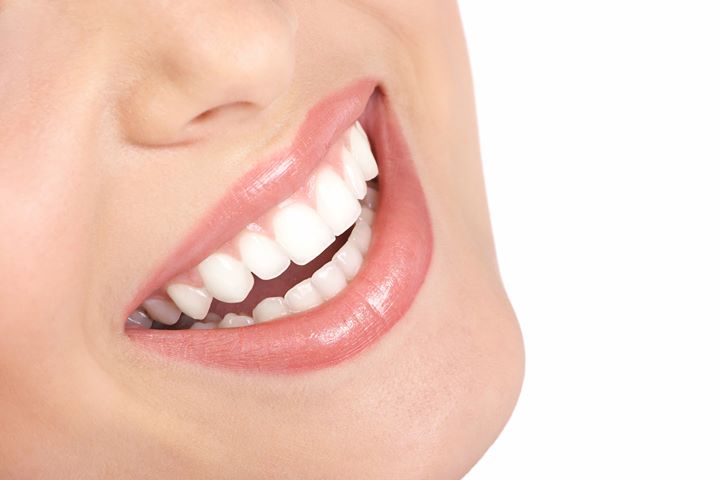Dr. Michael Hamblin sincerely loves being a dentist. He enjoys both the science of dental care, as well as the satisfaction of helping patients improve their oral health. Dr. Hamblin is always happy to walk you through treatment plans or explain a procedure or X-rays, and one of his favorite things is giving patients a tour of the CEREC® design and milling units where he artfully creates custom crowns.
He calls it work, but if you see his grin you’ll wonder! Dr. Hamblin is not only a very skilled practitioner but he is passionate about his work—two important qualities in a health care provider. Dr. Hamblin received his undergraduate degree in Biology from Sonoma State University and went on to dental school in San Francisco at UOP School of Dentistry, one of the most clinically advanced schools in the country. As a Doctor of Dental Surgery, Dr. Hamblin continues to advance his knowledge and experience through educational courses in both general dentistry, as well as specialty areas like sports dentistry and neuromuscular dentistry.
Dr. Hamblin is a member of the American Dental Association (ADA), the California Dental Association (CDA), the Redwood Empire Dental Society (REDS), DOCS Education for sedation dentistry (DOCS), and the Las Vegas Institute for Advanced Dental Studies (LVI).
Implant Dentures
The best solution for those with loose or poor fitting dentures
Any denture wearer will tell you there’s nothing more upsetting than a slipping denture and the anxious uncertainty it brings. Not only can the denture become an embarrassment, but an ill-fitting appliance will eventually wear down the very ridges (bone) that support it. Then it’s more slipping, more often.
One solution to this uncomfortable state of affairs is dental implants. You’ve heard of implants that replace a single tooth, or several at either end of a traditional bridge. Well, the denture wearer can benefit as well. With two to four implants in place—bonded to the bone itself—a denture has something to “hang on” to. We create an over-denture that fits atop the implants and lends more permanent stability.
Next-to-natural options that restore more than missing teeth
The stability provided by implant dentures is as close as you can get to natural teeth, but improved chewing and speaking efficiency is by no means where the benefits end. By putting teeth back where they belong, dentures and implants can restore and keep facial muscles from sagging by providing support for cheek and lips. And denture wearers may also notice improved nutrition, since they can finally enjoy those crunchy fresh fruits and vegetables. It can truly be a life changing experience.
What causes tooth discoloration?
As we grow older, our adult teeth gradually become darker, mainly due to changes in the mineral structure and composition of teeth. Your teeth can also become stained by eating certain kinds of foods like berries, beets and candy. Certain beverages can also cause tooth discoloration: soda, cola, coffee, tea and red wine. Tobacco products, both cigarettes and chewing tobacco cause tooth discoloration.
What’s involved in tooth whitening?
First, an examination will determine whether you are a candidate for Tooth Whitening and what type of whitening system will provide the best results for your teeth.
If you’re in a hurry for whiter teeth, you may decide to have your teeth lightened immediately in our office. Our office offers either an in-office whitening procedure while you sit in the dental chair. Many patients alternatively choose dentist-supervised at-home whitening, which is more economical and can provide similar results.
If you choose at-home whitening impressions will be made of your teeth to fabricate whitening tray appliances for you. The trays are custom made it fit your mouth exactly. They are lightweight so that it can be worn comfortably while you are awake or sleeping. The whitening trays are so thin you should even be able to talk and work while wearing your trays. Along with the whitening tray appliances, you’ll receive the whitening gel material and given instructions on how to apply the gel and wear the trays.
Some systems recommend whitening your teeth from two to four hours a day. Generally this type of system requires three to six weeks to complete, and works best on patients with sensitive teeth. Other systems recommend whitening at night while you sleep. This type of system usually requires only 10-14 days.
Is tooth whitening safe? Any side effects?
Several studies have proven whitening to be safe and effective, and the American Dental Association has granted its seal of approval to many popular teeth whitening products. Some patients may experience slight gum irritation or tooth sensitivity, which will resolve when the treatment ends.
What results can I expect after tooth whitening?
No one can really predict how much lighter your teeth will become. Every case is different, but typically there is a two-shade improvement as seen on a shade guide. The success rate depends upon the type of stain involved and your adherence to the prescribed regimen. Whitening does not lighten artificial materials such as resins, silicone, or porcelains restoration.
How long does tooth whitening last?
Whitening should last from one to five years, depending on your personal habits such as smoking and drinking coffee or tea. At this point you may choose to get a touch up. This procedure may not be as costly because you can use the same whitening trays. Re-whitening takes less time than the original treatment.
Is tooth whitening for you?
Generally, whitening is successful in at least 90 percent of patients, though it may not be an option for everyone. Consider Tooth Whitening if your teeth are darkened from age, beverages or smoking. If you have very sensitive teeth, periodontal disease, or teeth with worn enamel, whitening may be discouraged until these other problems are resolved.
What is a root canal?
Underneath your tooth’s outer enamel and within the dentin is an area of soft tissue called the pulp, which carries the tooth’s nerves, veins, arteries and lymph vessels. Root canals are very small, thin divisions that branch off from the top pulp chamber down to the tip of the root. A tooth has at least one but no more than four root canals.
Why does a toothache cause pain?
When the pulp becomes infected due to a deep cavity or fracture that allows bacteria to seep in, or injury due to trauma, it can die. Damaged or dead pulp causes increased blood flow, and this pressure cannot be relieved from inside the tooth. Pain in the tooth is commonly felt when biting down, chewing, or applying hot or cold foods and drinks.
Why do I need root canal treatment?
Because the tooth will not heal by itself. Without treatment, the infection will spread, bone around the tooth will begin to degenerate, and the tooth may fall out. Pain usually worsens until one is forced to seek emergency dental attention. The only alternative is usually extraction of the tooth, which can cause surrounding teeth to shift crookedly, resulting in a bad bite. Though an extraction is cheaper, the space left behind will require an implant or a bridge, which can be more expensive than root canal therapy. If you have the choice, it’s always best to keep your original teeth.
What is involved in root canal treatment?
First, you will probably be given a local anesthetic to numb the area. A rubber sheet is then placed around the tooth to isolate it. Next, a gap is drilled from the crown and any affected tissue is cleaned and reshaped. Medication may be inserted into the area to help fight bacteria. Depending on the condition of the tooth, the crown may then be sealed temporarily to guard against recontamination, or the tooth may be left open to drain, or we may go right ahead and fill the canals. If you’re given a temporary filling, it’s usually removed at the next visit and the canal(s) are filled. Once filled, the area is permanently sealed and a gold or porcelain crown is placed over the tooth to strengthen its structure and improve appearance.
What happens after root canal treatment?
Swelling may cause discomfort for a few days, which can be controlled by an over-the-counter pain killer. A follow-up exam can monitor tissue healing. From this point on, brush and floss regularly, avoid chewing hard foods on the treated tooth, and see your dentist regularly.
Who should get a bridge?
If you are missing any teeth and are committed to maintaining good oral hygiene practices, you may be a good candidate for a bridge. A bridge is the most natural choice to fill the space in your mouth left by missing teeth. If left unfilled, this space can cause the surrounding teeth to drift out of position and can cause teeth and gums to become more susceptible to tooth decay and gum disease, causing further tooth loss. Bridges not only correct an altered bite and improve your chewing ability and speech, but they also safeguard your appearance by preventing the collapse of your facial features that can cause premature wrinkles and age lines.
What type of bridges are there?
Besides traditional bridges, another popular design is the resin bonded or “Maryland” bridge, primarily used for the front teeth. This is usually the most economical choice when the abutment teeth are healthy and don’t contain large fillings. The replacement tooth is fused to metal bands that can be bonded to the abutment teeth with a resin cement and hidden from view, reducing the amount of preparation on the adjacent teeth.
A cantilever bridge may be used if there are teeth on only one side of the span. This involves anchoring the false tooth to one side over one or more natural, adjacent teeth. If there are no adjacent teeth to act as anchors, we may recommend an implant–a metal post that is surgically embedded into the bone and capped with a crown as an abutment. In some cases where the span is large, we may recommend a removable partial denture or even an implant-supported prosthesis.
How do I care for a bridge?
With a bridge, it is more important than ever to brush, floss, and see your dentist regularly. If you do not control the buildup of food debris and plaque–the sticky film of bacteria formed from food acids–your teeth and gums can become infected, requiring further treatment and resulting in possible loss of the bridge. You may also use floss threaders that help remove bacteria from hard to reach spaces between the bridge and adjacent teeth and gums.
If you maintain optimal oral hygiene care, you can expect your fixed bridge to last as many as 8-10 years, or even longer.




